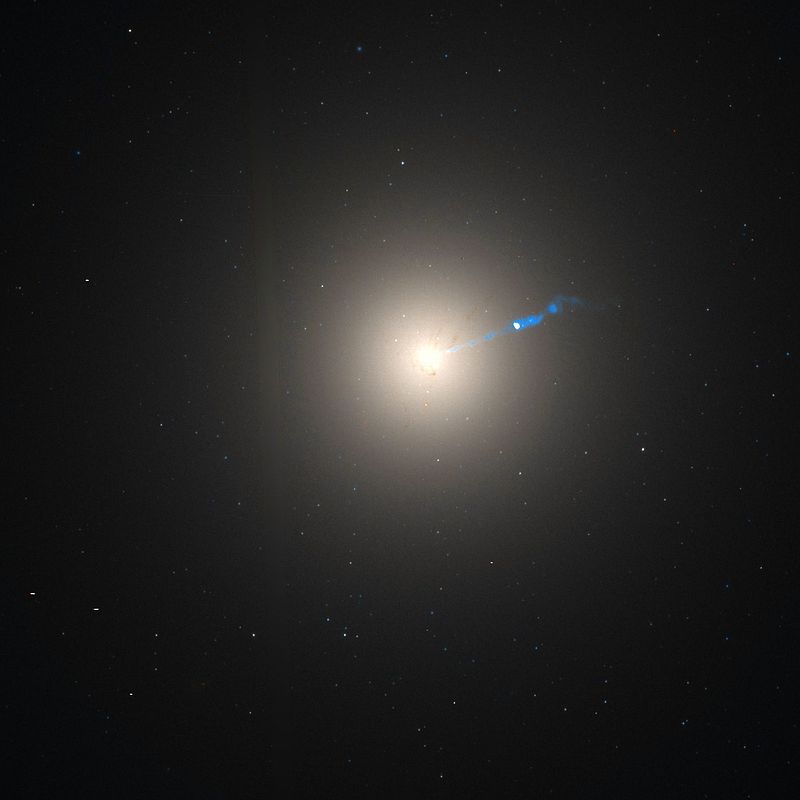
Image courtesy of NASA and Wikimedia
The elliptical galaxy M87 is, like most elliptical galaxies, a big fuzzy ball of light, composed of hundreds of billions of stars. But if one looks closely at its center, one will see something rather peculiar: a thin beam of light shining outward. This "jet" is caused by light emitted by charged particles shooting outward from the center of the galaxy at close to the speed of light.

Image courtesy of
NASA and Wikimedia
Images in optical light, taken by the Hubble Space Telescope, show the same structure as images made by radio telescopes.
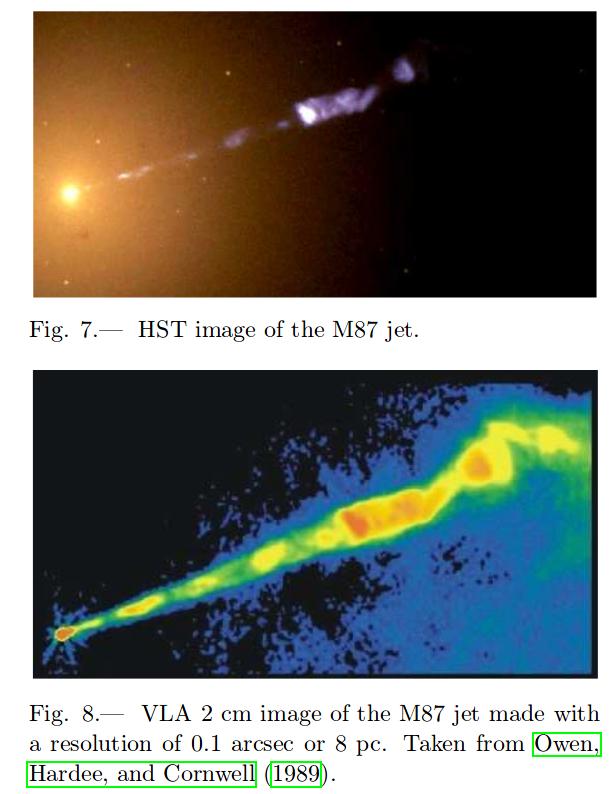
Images 7, 8 taken from
Kellerman et al., Ap&SS, 311, 231 (2007)
The innermost regions of the jet originate from the central nucleus of the galaxy, where a supermassive black hole lurks. But, until this year, our telescopes were unable to discern any features of the postulated giant. It simply appeared as a bright spot.
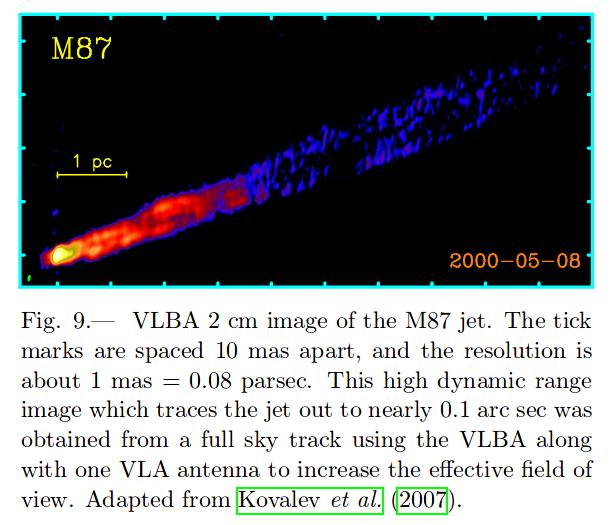
Image 5 taken from
Kellerman et al., Ap&SS, 311, 231 (2007)
In order to increase the spatial resolution of their radio images, astronomers have spent a decade (or more) arranging to combine the signals collected by radio telescopes from locations around the world. This collaboration of scientists from many different observatories has created the Event Horizon Telescope.
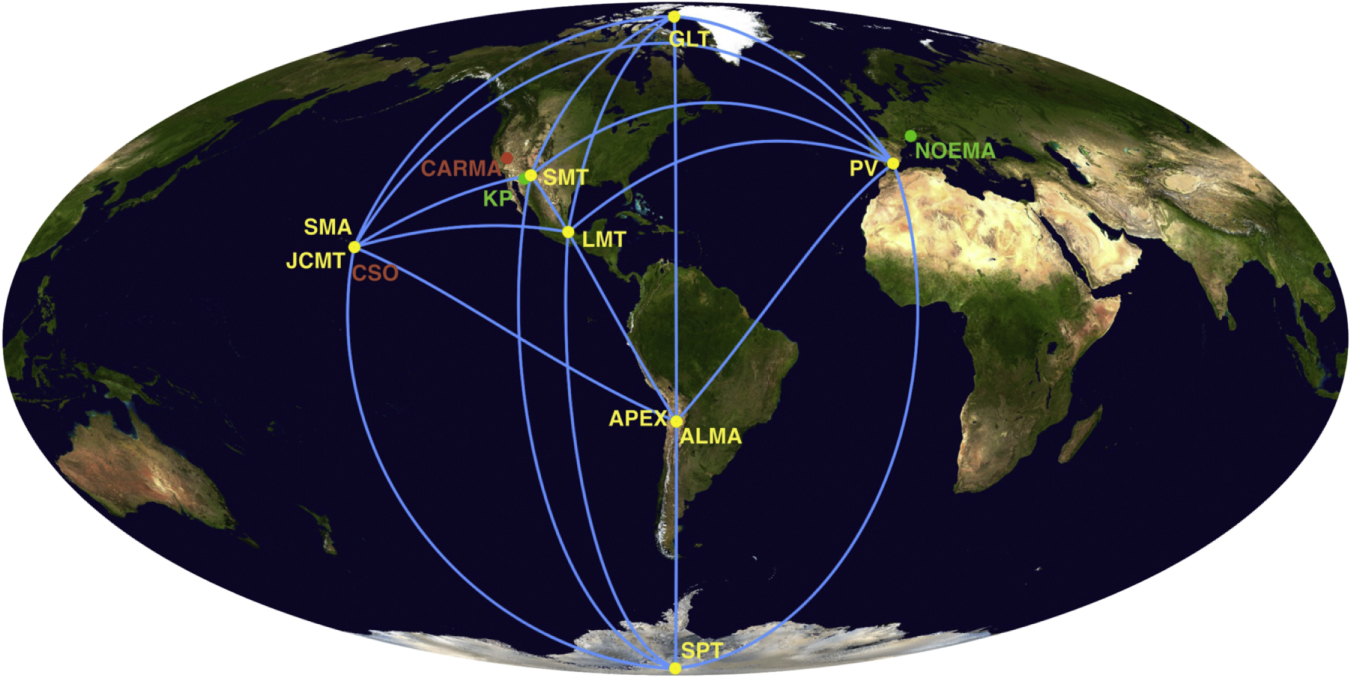
Image 1 taken from
First M87 Event Horizon Telescope Results. II. Array and Instrumentation
ApJ, 875, L2 (2019)
In order to create high-resolution images, the dishes must all collected radiation at EXACTLY the same time. It's no easy matter to arrange for all the instruments to observe the same object at once; bad weather, equipment problems, staffing issues, and other reasons get in the way. It was only in April, 2017, that the team was able to make an extended series of measurements over the course of several days.
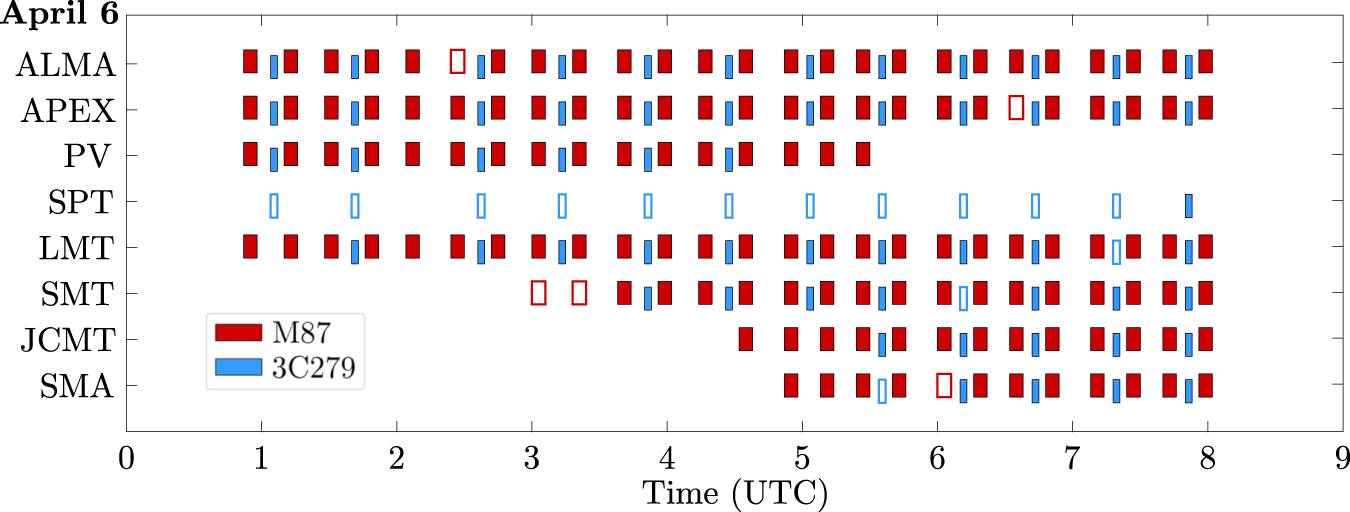
Image 12 taken from
First M87 Event Horizon Telescope Results. II. Array and Instrumentation
ApJ, 875, L2 (2019)
At each site, astronomers sampled the radiation gathered by their telescopes billions of times each second, recording all the numbers on high-speed hard drives. Over the course of 5 or 6 hours, the total volume of data collected at each site was many Terabytes.
This is way too much information to send over ordinary networks, so the astronomers simply carried the hard drives to a central location and analyzed the data there.

Image 9 taken from
First M87 Event Horizon Telescope Results. II. Array and Instrumentation
ApJ, 875, L2 (2019)
The analysis of this information is complex, to put it mildly. One of the basic principles is that pairs of radio dishes that are separated East-West on Earth can reveal fine details in the East-West direction in the sky; and pairs of dishes which are far apart North-South on Earth can see litle features separated North-South in the sky. The greater the number of dishes, and the larger the range of orientations, the better the final picture will look,
For once, the rotation of the Earth actually HELPS astronomers. The figure below shows a representation of the pairs of sites in the combined Event Horizon Telescope over the course of several hours of observation. Each pair of sites produces a little "worm" shape due to the rotation of the Earth, which carries the dishes around with it, changing their apparent separation and orientation (as seen from the source, M87).
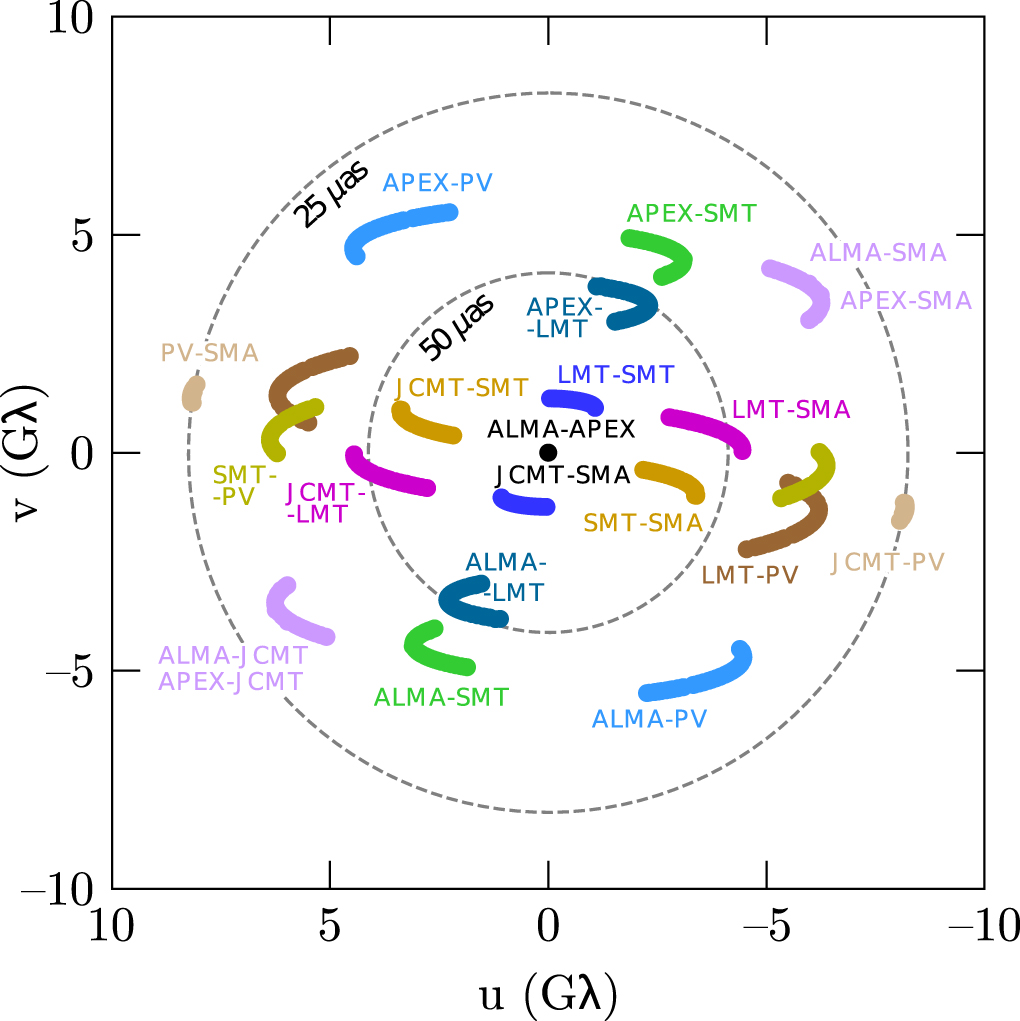
Image 11 taken from
First M87 Event Horizon Telescope Results. II. Array and Instrumentation
ApJ, 875, L2 (2019)
After combining the signals from all the sites, and processing the data for months, the EHT team was able to produce images showing the location of hot gas circling around the black hole. In the figure below, the left-hand panel shows the observed image, the center panel a model of the actual distribution of hot gas, and the right-hand panel a blurred version of the model. It does look pretty similar to the real image, doesn't it?
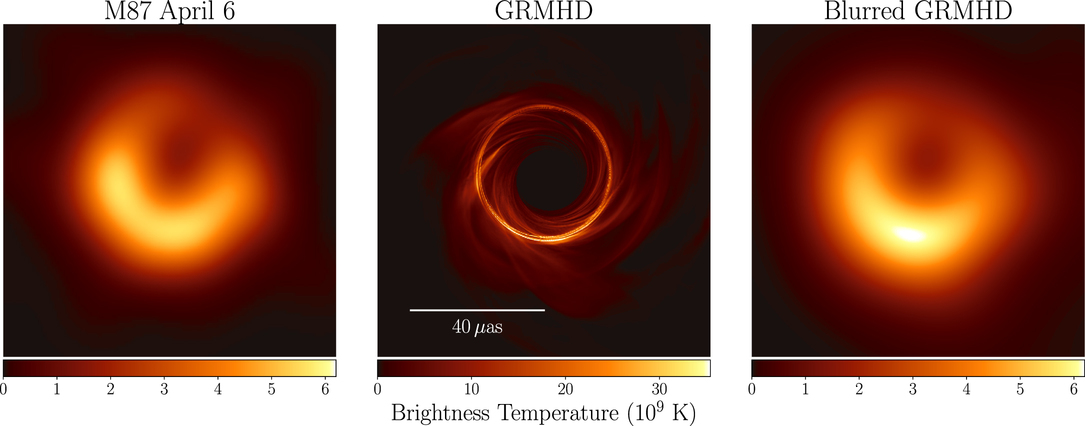
Image 1 taken from
First M87 Event Horizon Telescope Results. V. Physical Origin of the Asymmetric Ring
ApJ, 875, L5 (2019)
The most prominent feature of the image is the asymmetry of the disk: it is brighter at lower-left (around 7 o'clock) and fainter at upper-right (around 1 o'clock). This tells us something about the orientation of the black hole's spin.
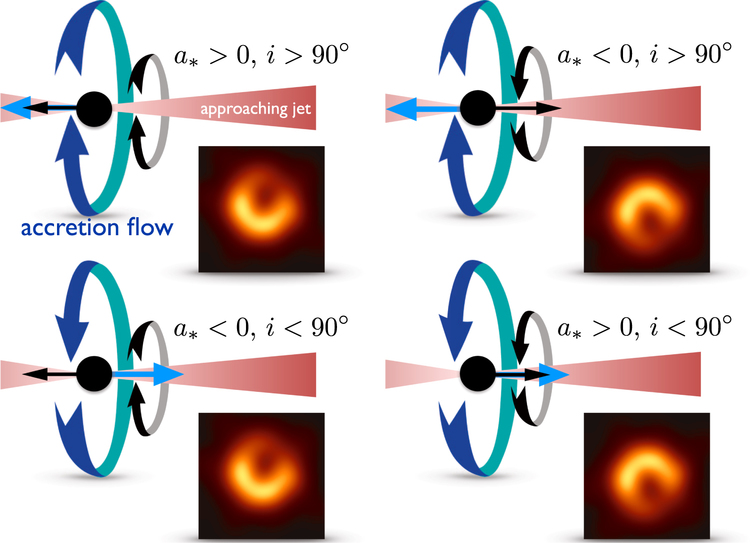
Image 5 taken from
First M87 Event Horizon Telescope Results. V. Physical Origin of the Asymmetric Ring
ApJ, 875, L5 (2019)
Gas which is orbiting very close to the black hole circles it at relativistic speeds, in the same direction as the black hole itself. Light emitted by the gas which is coming toward us in this orbit is modified by this high speed motion in two ways:
This Doppler boosting is the reason that the lower-left region of gas is brighter than the upper-right area.
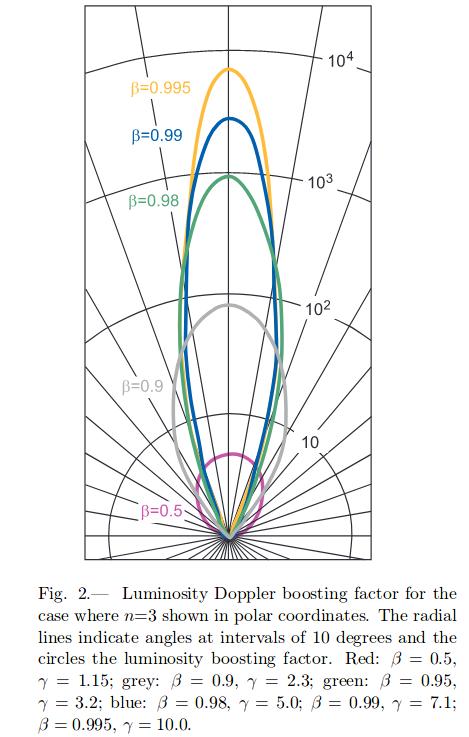
Image 2 taken from
Kellerman et al., Ap&SS, 311, 231 (2007)